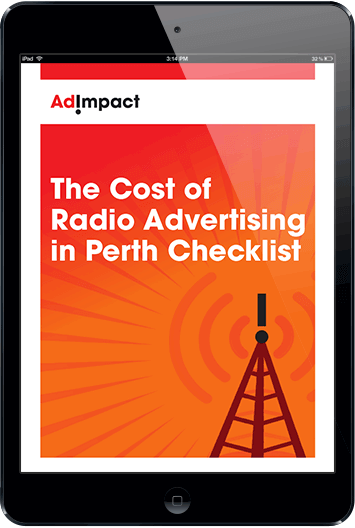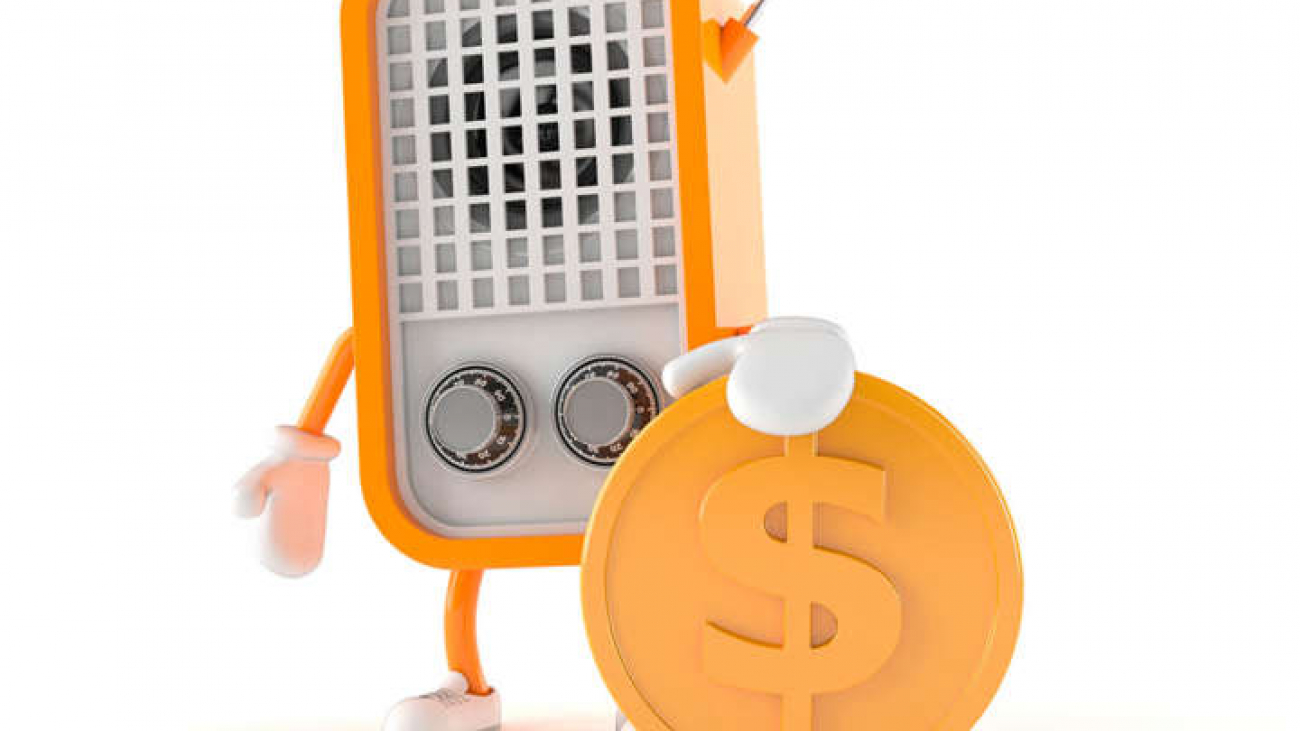So, you’re looking to advertise on radio. First of all, great choice! Radio is an amazing medium that has truly stood the test of time.
Advertising on radio is exciting for a number of reasons. For one, the medium is audio-only, which forces the ad to be really creative in order to be noticed by potential customers. It is also a very trusted medium and its longevity is a testament to this. Finally, radio advertising costs can be more budget-friendly than some other mediums.
If you are thinking of doing radio advertising, you are probably wondering, “how much does it cost to advertise on radio?”
So you can get a better understanding of the factors affecting the pricing in Perth, we are going to breaking down the pricing process. This will include information regarding:
- The Number of Ads
- Writing
- Voice Over Artists
- Recording
- Media Planning
- Frequency and Reach
Breaking it down:
To understand radio advertising rates, we need to understand the process of creating a radio ad. Each stage in the process is necessary for different reasons and comes with an associated radio advertising cost.
1. Production – Number of Ads
The production of an ad has a number of different stages, beginning with the number of ads that are to be produced. Obviously having more than one ad will increase radio costs, but the question is, why would you want to have more than one?
Why it is important:
Having a series of ads is beneficial because it is able to reinforce the message of the campaign. Radio is a ‘frequency medium’ and requires that people hear the ad numerous times in order to be remembered. Variety in radio advertising ensures that a more broad net is cast over the target audience – i.e. different people will respond to different ads.
The typical radio campaign consists of three ads. However, there is nothing wrong with deviating from this number to suit the needs of your business.
2. Production – Writing
The first part of getting your ad to be noticed by potential customers comes down to how it is written. A radio ad needs to tell a story that informs customers about your business and entertains them at the same time.
Why it is important:
When a radio ad is written well, it entertains and informs seamlessly. Generally, radio ads only have 30 seconds to grab the listener’s attention and deliver the relevant information. Designing a radio ad is a craft that takes creativity, production and time limits into consideration.
An ad that is not crafted properly will be either boring, unclear, annoying or a combination of all three. Poor writing equates to a waste of money, because your ad becomes lost in a sea of competition.
3. Production – Voice Over Artists
The strength of your radio ad can be completely changed by the voice over artist that you choose. Ultimately, your ad is a personification of your brand, and needs to be able to connect with people on a personal level.
Why it is important:
We’ve all heard the radio ads that have been voiced by the wrong voice over artist. In many of these cases, an ad that would otherwise have been effective can seriously weaken the message if the wrong voice is used.
When the VO artist is inexperienced or just simply the wrong fit for an ad, it completely changes how the ad feels to the person listening. If the tone feels off, or the VO artist doesn’t represent the target audience, people tune out. On the other hand, a talented VO artist can make an ad come alive and connect with the listener.
4. Production – Studio Time and Editing
In order to record a professional-sounding ad, a recording studio and sound engineer need to be booked. This will ensure that the ad sounds great and is mastered well.
Why it is important:
There are numerous factors that come into play during this stage of the production process. The studio time and the sound engineer’s time are both necessary costs for the production of the ad. In addition to this, licensing rights need to be paid for any file music that is used in the ad.
The number of Ads that is produced also fits into the equation. If three ads are produced in one session, it will be more cost-effective than three ads done over three separate sessions.
5. Media Planning
This is the process where the advertising or media professionals determine the best media strategy for your business. This means finding the right radio stations to play the ad on, the right times to play the ads and booking the entire process.
Why is it important:
Currently, there are a plethora of media outlets available for you to advertise with. With so many options, the challenge becomes finding the right media outlets in order to reach your target audience. This is when it is important to have a media professional navigate the field with you. A media professional knows this part of the industry very well, which enables them to negotiate the best possible advertising rates on your behalf.
As radio is a frequency medium it is best to spread your commercial across all day parts – breakfast, morning, afternoon and evening. Buying in all day parts is not only more cost efficient than in just breakfast slot entirely, it is also effective as your campaign is able accumulate higher reach and frequency. 20-25 spots per week are recommended.
Also, when selecting a radio station ensure that the listeners’ profile matches the profile of your target audience. For example, certain radio stations are focused on younger markets and others are focussed on older ones. Finding the right station enables you to get your message to the right people.
6. Frequency and Reach
Radio ads, like all ads, require frequency and reach in order to be effective. Frequency is the amount of times an ad is shown in any given timeframe (e.g. 30 spots per week, 7 per day etc.). Reach is the amount of people the ad will reach (e.g. 30,000 men aged 25-40).
Why it is important:
There is always a bit of debate as to which factor should be made more of a priority. While neither should be neglected, there are some general guidelines to go by.
For branding campaigns, i.e. campaigns that aim to get people to trust a brand, frequency is required. This is because branding campaigns are about changing beliefs about a product, service or brand. People tend to be very stubborn about their beliefs, so hearing a new opinion once really isn’t going to cut it. They need frequency. They need to be exposed to the new idea again and again in order for it to make an impact.
For tactical campaigns, such as a special deal that’s on for “one month only”, the focus should be placed on reach. This is because there isn’t a major belief shift that needs to happen in order to get people to take action. Prices are pretty cut and dry; people either want to pay or they don’t. By focusing on reach, the message gets out to more people and possibly more conversions are made.
Radio is the way to go
When done correctly, advertising on radio is both engaging and effective. Just like any other medium, radio has its own set of challenges when it comes to getting the best results. By employing the right techniques, you will ensure that your radio campaign stands out and is remembered by your audience.
If you would like to obtain a guide for radio media and production costs in Perth, then download our Checklist below:

Free eBook
Fill in the form below to download the free eBook



